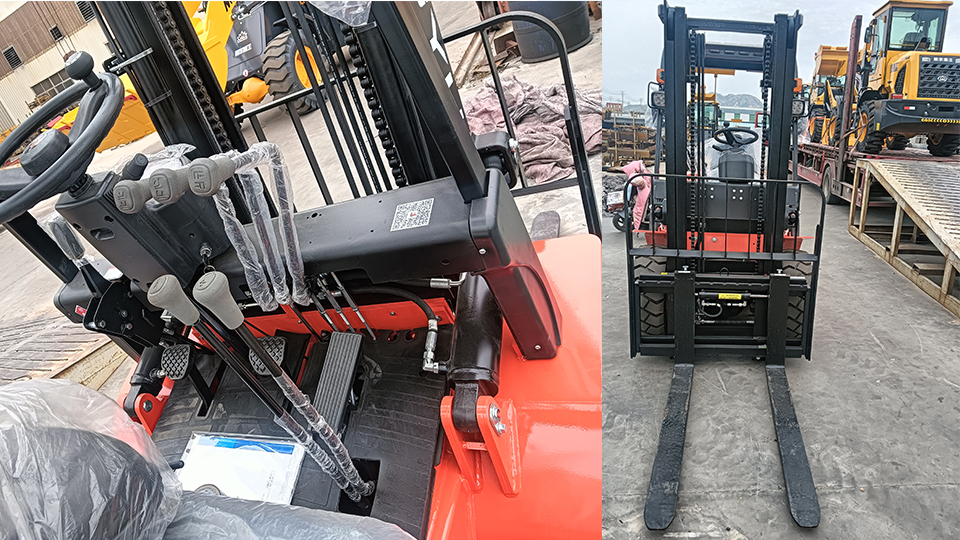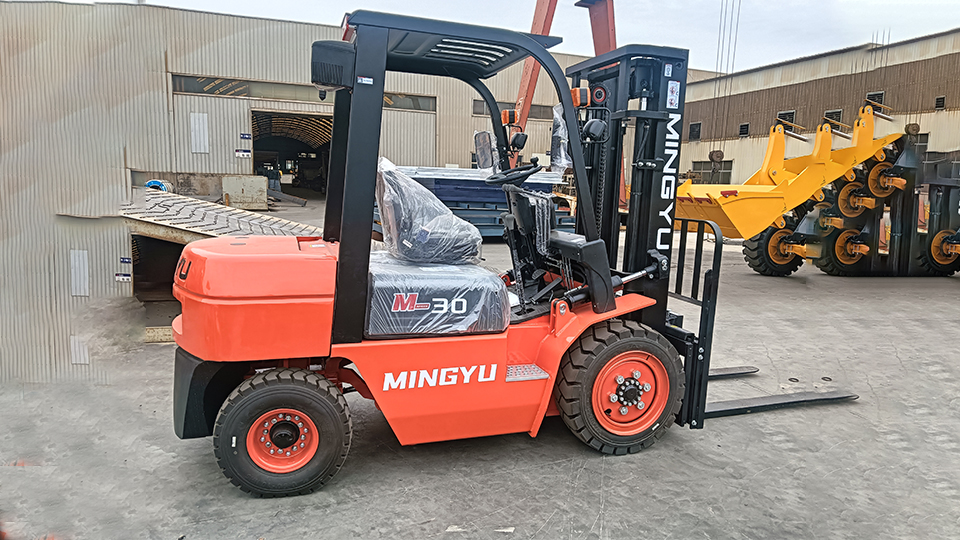
The Vertical Navigator: Understanding the Reach Truck in Material Handling
In the intricate ballet of modern warehousing and distribution, maximizing storage density while maintaining efficient retrieval is paramount. Amidst the diverse fleet of material handling equipment, the reach truck stands out as a specialized and highly effective solution for navigating narrow aisles and accessing elevated racking systems. More than just a modified forklift, the reach truck embodies a unique design philosophy centered on vertical reach and compact maneuverability. This technical article delves deep into the anatomy, operational principles, advantages, disadvantages, various types, key features, safety considerations, and the evolving role of reach trucks in contemporary warehousing.
The Core Design and Operational Principles:
The fundamental characteristic that distinguishes a reach truck is its ability to "reach" beyond its stabilizing legs to retrieve or deposit loads within racking systems. This is achieved through a unique mast and outrigger configuration:
Outrigger Legs: Unlike counterbalance forklifts that rely on a rear counterweight for stability, reach trucks utilize stabilizing outrigger legs that extend forward from the main body. These legs straddle the pallet load, providing a stable base for lifting and maneuvering. The drive wheels are typically located beneath the operator compartment or within the main body.
Reach Mechanism: The defining feature of a reach truck is its ability to extend the forks and the mast assembly (or just the forks in some designs) forward. This "reach" allows the truck to access pallets deep within racking without the need for the entire truck body to be positioned directly in front of the load. Different reach mechanisms exist:
Scissor Reach: Employs a scissor-like mechanism to extend the forks. This design offers a relatively long reach and good stability.
Telescopic Reach: Utilizes telescoping mast sections or fork carriages that slide within each other to achieve the desired reach. This design can offer very high lift heights and precise positioning.
Pantograph Reach: Uses a hinged arm mechanism to extend the forks. This design offers a compact retracted length and good maneuverability in tight spaces.
Overhead Guard: Similar to other forklifts, reach trucks are equipped with an overhead guard to protect the operator from falling objects.

Operator Compartment: The operator typically stands or sits within a compact compartment, often positioned high to provide good visibility, especially when working at elevated heights. Controls are ergonomically designed for precise operation of the reach, lift, and travel functions.
Electric Power: The vast majority of reach trucks are electrically powered, utilizing batteries as their energy source. This is crucial for indoor warehouse environments, as it eliminates exhaust emissions and reduces noise levels.
Advantages of Reach Trucks in Warehouse Operations:
The specialized design of reach trucks translates into several significant advantages for warehouse and distribution center operations:
Narrow Aisle Operation: The compact body and the ability to reach loads eliminate the need for wide turning radii, allowing for significantly narrower aisles compared to counterbalance forklifts. This maximizes storage density within the same warehouse footprint, increasing overall capacity.
High Lift Capabilities: Reach trucks are specifically designed to access high levels of racking, often reaching heights of 30 feet or more. This vertical utilization of space further enhances storage capacity.
Improved Space Utilization: By enabling narrow aisle operation and high stacking, reach trucks contribute to better overall space utilization within the warehouse, reducing the cost per pallet stored.
Electric Operation Benefits: The electric powertrain offers several advantages, including zero emissions (ideal for indoor environments), quieter operation (improving the working environment), and lower operating costs (electricity vs. fuel, reduced maintenance).
Precise Load Handling: The reach mechanism allows for precise positioning of loads within racking, minimizing the risk of damage to goods or the racking itself.
Operator Visibility: The elevated operator position often provides excellent visibility of the load and the surrounding racking, contributing to safer and more efficient operation.
Maneuverability: Despite their high lift capabilities, reach trucks are generally quite maneuverable in narrow aisles due to their compact design and articulated steering systems in some models.
Disadvantages and Considerations of Reach Trucks:
While highly advantageous in specific applications, reach trucks also have certain limitations and considerations:
Limited Outdoor Use: Primarily designed for smooth, level indoor surfaces, reach trucks typically have smaller wheels and lower ground clearance, making them unsuitable for rough terrain or outdoor operations.
Lower Travel Speeds (Compared to Counterbalance): Reach trucks are generally not designed for long-distance travel within a facility. Their focus is on vertical movement and short-distance maneuvering within aisles.
Operator Skill Requirements: Operating a reach truck effectively and safely, especially at height and in narrow aisles, requires a higher level of operator skill and training compared to some other types of forklifts.
Load Capacity Considerations: While capable of lifting significant weights, the load capacity of a reach truck may decrease at higher lift heights and extended reach distances. It's crucial to adhere to the load capacity charts provided by the manufacturer.
Aisle Requirements (Still Exist): While narrower than for counterbalance trucks, dedicated aisles are still required for reach truck operation. The minimum aisle width depends on the specific model and the size of the load.
Floor Condition Sensitivity: Reach trucks are sensitive to uneven or damaged floors, which can affect stability and maneuverability, especially at height.
Battery Management: As electric vehicles, reach trucks require proper battery charging and maintenance procedures to ensure optimal uptime and battery lifespan.
Different Types and Key Features of Reach Trucks:
The term "reach truck" encompasses several variations, each tailored to specific operational needs:
Standard Reach Truck: The most common type, featuring outrigger legs and a reach mechanism (scissor, telescopic, or pantograph) to access single-deep racking.
Double-Deep Reach Truck: Designed to access pallets in double-deep racking configurations, these trucks have longer reach mechanisms and specialized forks that can extend further. This significantly increases storage density but requires even more precise operator control.

Straddle Reach Truck: Similar to standard reach trucks but with wider outrigger legs that straddle the bottom pallet in the racking. This design can offer increased stability for heavier loads.
Turret Trucks (VNA - Very Narrow Aisle): While technically a separate category, turret trucks share similarities with reach trucks in their ability to operate in very narrow aisles. However, they typically have a rotating fork head that allows them to pick and place loads to either side without turning the entire truck.
Articulating Reach Trucks: These trucks feature a mast that can pivot or articulate, allowing them to operate in very narrow aisles and sometimes even perform some side-loading functions.
Key features commonly found on reach trucks include:
High Lift Masts: Multi-stage masts designed for reaching significant vertical heights.
Sideshift: Allows the operator to laterally adjust the forks for precise load positioning without moving the entire truck.
Fork Positioners: Enables the operator to hydraulically adjust the distance between the forks to accommodate different pallet sizes.
Height and Load Capacity Indicators: Provide the operator with real-time information on the current lift height and the remaining load capacity.
Operator Presence Systems: Safety features that prevent truck operation if the operator is not in the designated operating position.
Regenerative Braking: Recovers energy during deceleration, extending battery life and reducing brake wear.
AC Drive and Lift Motors: Offer improved efficiency, control, and reduced maintenance compared to DC motors.
Ergonomic Operator Compartments: Designed for operator comfort and reduced fatigue, often including adjustable seating, intuitive controls, and good visibility.
Telematics and Fleet Management Systems: Increasingly integrated for monitoring truck usage, battery performance, and maintenance needs.
Safety Considerations for Reach Truck Operation:
Operating reach trucks safely, especially at height and in narrow aisles, requires strict adherence to safety protocols and proper training:
Thorough Operator Training: Operators must be specifically trained and certified to operate reach trucks, understanding their unique controls, stability characteristics, and potential hazards.
Pre-Shift Inspections: Daily inspections of the truck, including tires, mast, forks, hydraulics, and safety devices, are crucial.
Adherence to Load Capacity Limits: Never exceed the rated load capacity, especially at different lift heights and reach distances. Refer to the load capacity plate.
Safe Operating Speeds: Operate at safe speeds appropriate for the aisle width, load, and lift height.
Awareness of Surroundings: Maintain constant awareness of pedestrians, other equipment, and obstacles in the operating area.
Proper Load Handling Techniques: Ensure loads are properly secured and balanced on the forks.
Careful Maneuvering in Narrow Aisles: Exercise caution when turning and maneuvering in confined spaces.
No Passengers: Never allow unauthorized personnel to ride on the reach truck.
Maintenance of Clear Aisles: Keep aisles free of obstructions and debris.
Reporting of Malfunctions: Any malfunctions or safety concerns should be reported immediately.
Battery Handling Safety: Follow proper procedures for charging, changing, and maintaining batteries.
The Evolving Role of Reach Trucks in Modern Warehousing:
As warehousing continues to evolve with increasing demands for efficiency and space optimization, the role of reach trucks remains critical. Advancements in technology, such as more sophisticated reach mechanisms, enhanced stability control systems, and integration with warehouse management systems, are further enhancing their capabilities. The trend towards taller and narrower aisles in modern distribution centers solidifies the reach truck's position as an indispensable tool for maximizing storage density and throughput.
Conclusion:
The reach truck is a sophisticated and indispensable piece of material handling equipment for operations that prioritize high-density storage and efficient retrieval in narrow aisle environments. Its unique design, centered on the "reach" mechanism and stabilizing outriggers, allows it to navigate vertical landscapes with precision and efficiency. Understanding its advantages, limitations, various types, and safety considerations is crucial for businesses looking to optimize their warehouse operations and leverage the full potential of this vertical navigator. As warehousing demands continue to evolve, the reach truck will undoubtedly remain a cornerstone of efficient and space-saving material handling strategies.
Name: selena
Mobile:+86-13176910558
Tel:+86-0535-2090977
Whatsapp:8613181602336
Email:vip@mingyuforklift.com
Add:Xiaqiu Town, Laizhou, Yantai City, Shandong Province, China